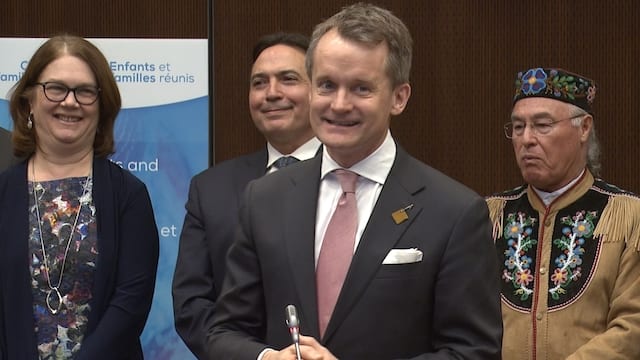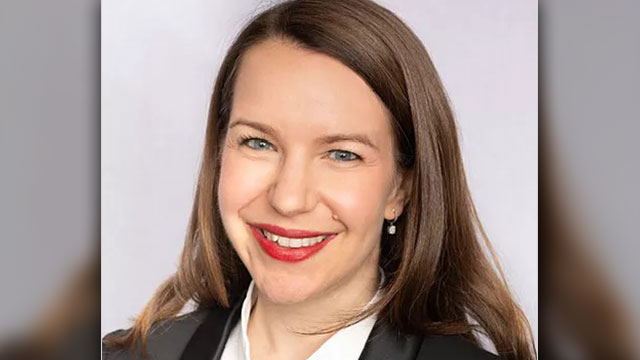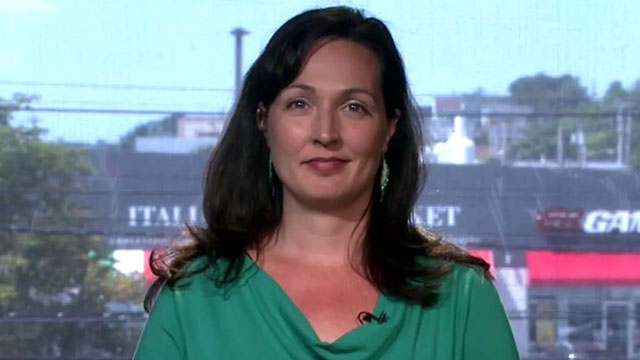
Federal legislation aimed at overhauling the Indigenous child welfare system comes into effect on Jan. 1, but so far there’s been no sign of a transition plan from the Trudeau government on how it will actually work.
“It’s very unclear to me what, if any, steps the federal government has taken to make sure that everyone knows about it and to have a coordinated effort. It doesn’t seem anybody has an idea of how this is going to work,” said Sarah Clarke, a child protection lawyer based in Toronto, Ont., of Bill C-92 that was passed last spring.
“This is what I do for a living and I don’t know anything about what the federal government is doing about that. There is no plan.”
New minimum standards and provisions immediately go into effect across the country in under a six weeks.
That includes non-Indigenous child welfare agencies required to now place a greater emphasis on keeping Indigenous children with families and connected to their culture, such as also notifying the child’s community over child protection matters.
“The last couple of months I have been in Sudbury, I’ve been in Barrie, I’ve been in Toronto, Oshawa and I would say nobody is ready. I say that because many workers and lawyers, particularly those that work in non-Indigenous agencies, don’t even know the bill exists. So that’s scary,” said Clarke.
“I recently did a trial where I was cross-examining a worker that was servicing an Indigenous family and I just asked her a question on whether or not she would have taken different steps in the face of Bill C-92 and she had no idea what I was talking about. She had never heard of it.”

(‘It doesn’t seem anybody has an idea of how this is going to work,’ says lawyer Sarah Clarke of Bill C-92. Submitted photo)
Naiomi Metallic said the same issues are unfolding in the Maritimes with the bill going into effect in under 43 days and despite the Trudeau government saying it did extensive consultation in developing the legislation. She is also not aware of a transition plan with the federal government.
Just recently a manager in legal aid told Metallic they didn’t know about the bill.
“No idea. None,” said Metallic, a lawyer and professor at the Schulich School of Law at Dalhousie University.
Metallic said that’s concerning because legal aid provides funding for many parents to fight child apprehensions in court, as it’s been proven most First Nations children are apprehended due to poverty-related concerns and not physical abuse.
“It doesn’t appear to be on the radar of other legal actors who really should have this on the radar. For example, judges. A lot of judges, I think, are not even aware. I think this lack of knowledge is across the board,” said Metallic.

(Mi’kmaw Lawyer Naiomi Metallic says many nations aren’t ready to handle the new legislation. APTN file photo.)
She said chiefs with some knowledge of the bill tend to focus on the inherent jurisdiction aspect that requires First Nation, Inuit and Metis communities to enter negotiations with the federal government, and respective provincial governments, to exercise their jurisdiction over child and family services. If a deal isn’t reached within a year, but it’s deemed the Indigenous group or nation acted in good faith, their proposed law trumps federal and provincial laws.
That’s the longer term impacts of the bill, which like the immediate changes, have no funding attached to them.
When C-92 comes into effect there is currently no funding attached to apply any of the changes.
Metallic said chiefs in New Brunswick will be getting notifications in the New Year from non-Indigenous agencies looking to place a child in protective services.
Metallic and others have been trying to educate nations in the Maritimes on what the new standards mean and that they will have “big impacts.”
“The minimum standards are going to change for certain provinces more than others,” she said. “In New Brunswick (First Nations) are going to get notices for these (child protection) hearings for the first time … and not even just hearings, but probably anytime a child is apprehended they are going to get notice of that.”
She said many nations don’t have capacity to handle it.
There’s also confusion over what court will hear these cases going forward.
“It’s still unclear where an agency should commence their child protection application,” said Clarke.
In Ontario, the cases are handled in the Ontario Court of Justice.
“The way I look at the legislation it does not provide for a clear statutory authority for the Ontario Court of Justice to apply the federal legislation. Nobody knows for sure. This is a huge problem in Ontario,” she said.
Clarke said the Ontario Court of Justice is “highly structured, highly case-managed, the judges are experts in child protection. They manage heavy workloads.”
She believes statutory authority could fall to an unequipped Superior Court of Justice.
Metallic said leaving that direction out of the act has led to this uncertainty, but remains confident courts will ultimately figure it out.
“It would have been excellent if the new act had just clarified that,” she said.
Clarke said she is aware of Indigenous associations in Ontario holding meetings to educate people on the bill’s implementation.
“These groups are trying to do their best to educate their audiences about the bill, but we don’t have any direction from the federal government on what they think is supposed to happen on Jan. 1. We don’t have any of that,” she said.
APTN asked Indigenous Services to email its transition plan, if it had one, but never heard by before deadline, however minutes after this story was published Tuesday afternoon Indigenous Services sent this response to a transition plan.
This is the departments full response:
“The Act was co-developed with our partners, and so will be its implementation. While in the election period, engagement with partners on implementation was put on hold. We will resume substantive discussions with partners shortly to develop the implementation plan for Bill C-92 an Act respecting First Nations, Inuit and Métis children, families and youth. This could include such matters as transition governance models; tripartite coordination agreements; capacity-building; funding; regulations if required; and data and reporting,” said a spokesperson in an email.
“We continue to be committed to exploring models for distinctions based governance. These would be venues for partners to highlight issues relating to transition and effective implementation of the Act.”
The office of Ontario’s attorney general punted questions from APTN over to its ministry regarding concerns raised by Clarke.
It then passed questions off to another ministry.
“I’ve checked with the folks in our ministry and they suggest that because these questions boil down to child welfare issues, you may wish to direct your question to the Ministry of Children, Community and Social Services,” said spokesperson Brian Gray.
APTN has not received a response from the ministry.









